T2 Stars: Jesse Midgett Helps Propel NASA Technology into Commercial Success

T2 Stars highlights people who are making a difference and leaving their mark on the federal tech transfer community. Jesse Midgett's career at NASA began when he was a college student in the agency's co-op (work-study) program. Now, as Technology Transfer Portfolio Manager (TPM) at Langley Research Center, he helps companies find the NASA technologies to meet their needs - even if the tech requires some vision and adaptation to become commercial products.
How did you get involved in technology transfer?
In 2002, I was engineering modifications on various research aircraft and managing research flight installations on the Boeing 757. A position was advertised within NASA Langley for a Visibility Coordinator. It was an administrative job with a broad array of primarily marketing duties, and I decided to apply. The position has morphed through many reorganizations and special assignments, leading now to primarily licensing and technology awards.
Is it true that you started working at NASA as a teenager? Tell us more.
Yes, I was 19 years young when I started working for NASA. I was a drafting and design major at a further away community college than they normally dealt with. They needed more co-op students in 1988 and I jumped at the chance.
I had no idea I would ever work for NASA, but I had always loved cars and had an old 1974 Vega my uncle gave me that I restored and repaired. This led to two years as a co-op in wind tunnels, then six years as a wind tunnel technician apprentice. Then, I applied for another position and switched to the hangar, and I got my A&P (airframe and powerplant) Mechanic's license from the FAA (Federal Aviation Administration).
I was going to night school for a mechanical engineering degree, and NASA sent me back to ODU (Old Dominion University) to be retrained as an engineer. After that, I worked on modifying aircraft for research flights, and I managed the installations of the research equipment I designed or was assigned to install on existing aircraft. Then, I switched into Tech Transfer, to the Inventions and Contribution Board as Chief Technologist, and then back into Tech Transfer due to sequestration cuts.
What does a typical day at the office look like for you?
I have just returned to Tech Transfer from a yearlong temporary assignment supporting NASA's three X-planes: X-66, X-59 and X-57 (being closed out). I feel very blessed to have been able to participate in X-Plane management as part of the Integrated Aviation Systems Program (IASP) management team. In that role, I mainly compiled weekly notes on all the planes and projects the IASP manages.
The X-66 - also called the Sustainable Flight Demonstrator (SFD) - is being built by Boeing and is targeted to fly in 2028. That was really a great experience to be in the conversations leading up to the announcement of the competition winner chosen to build the aircraft and see the team unveil the public details of the design. I learned a lot about the public affairs team and the prep work that goes into these big announcements.
Now I am learning a new portfolio of technologies and duties, so my typical day is still evolving. The day begins with working through my inbox and responding to things I can address immediately. Then it progresses through meetings, additional actions that come in and long-term licensing and awards generation research. I call it "digging potatoes": The opportunities are there waiting to be found, but it takes a bit of digging to get to them.
What do you love about your job?
The diversity of the technologies we deal with, but especially being able to help inventors and the Center receive recognition for their creativity.
What's the biggest challenge in your position?
Most NASA technologies need more development to become viable commercial products. The companies that come to us are usually looking for drop-in tech to solve their problems. The TT Valley of Death - where technologies need funding to get funding - is always there.
What is your most valuable tool or asset in succeeding at your work?
My tech transfer associates, the amazing researchers and the corporate knowledge of record. The corporate knowledge of recorded information on technologies and their histories with supplemental internet research is essential to understanding the intersections of NASA technologies and commercial uses. I use those tools to mine internal and external technology awards and to connect customers to the right technologies. After that, an old-fashioned conversation with researchers and licensees is where it all comes together.
What do you wish more people knew about Langley Research Center or NASA more broadly?
We have an online patent portfolio with hundreds of excellent solutions looking for commercial problems to solve. Most of these will need work to be adapted to new problems, but millions of dollars' of research has already been done to get them a head start.
What do you do for fun?
I mostly maintain my cars, motorcycles and boats in my spare time. I get a lot of satisfaction from the challenges of the repairs and making things right again. I love a good test drive or ride after accomplishing a hard repair.
A few years ago, I took up mushroom hunting, and I enjoy the methodical and sometimes technical location and identification process in the outdoors. It's something you can do everywhere, and it's not expensive like other hobbies I have enjoyed, such as driving my race cars on track days.
You recently became the Chair of the FLC Awards Subcommittee. Why were you interested in this role, and what has the experience been like so far?
One of my previous positions at NASA was as the Chief Technologies of the Inventions and Contributions Board. We judged the best technologies at NASA, and when sequestration cut the program back, I was forced to switch more to Technology Transfer again. The FLC Awards combine both activities, and it was an opportunity to learn how Langley could increase its award performance externally. I hope to learn a lot that I can leverage for Langley and NASA.
What has been your favorite or most valuable FLC-related experience?
I attended the Intellectual Property Valuation Course in Phoenix in 2019, and it was very well done. The Awards Subcommittee has been very interesting for the past two months since I volunteered, and I am sure it will continue to be so.
What advice would you give to someone new to the tech transfer profession?
Be patient and persistent. Use all your resources to understand the technologies in your portfolio so you can see new uses for them.
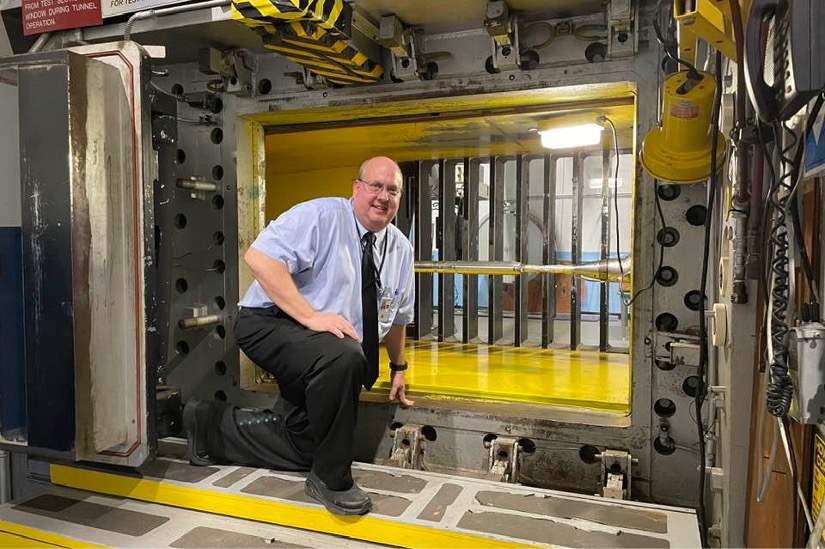
Kneeling in front of the Unitary Plan Wind Tunnel test section, located at the NASA Langley Research Center
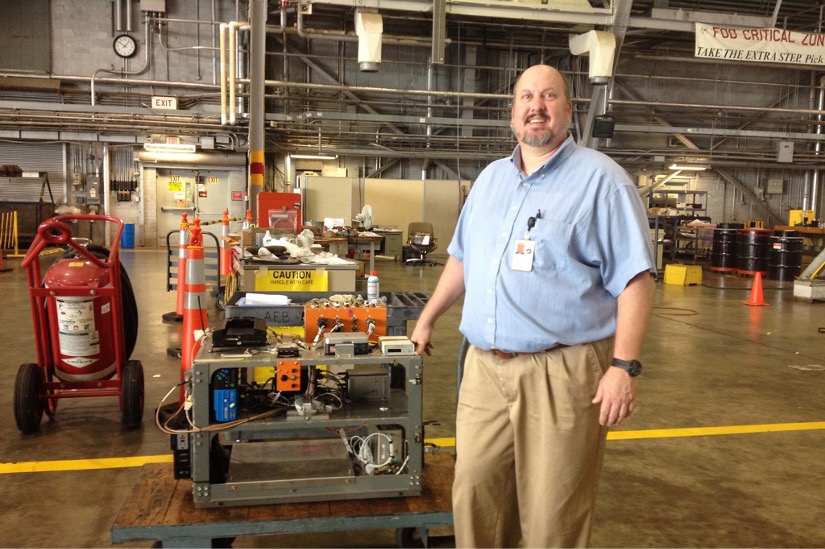
Standing with his hand on an instrument rack, for which he did the structural design for flight tests on light aircraft.


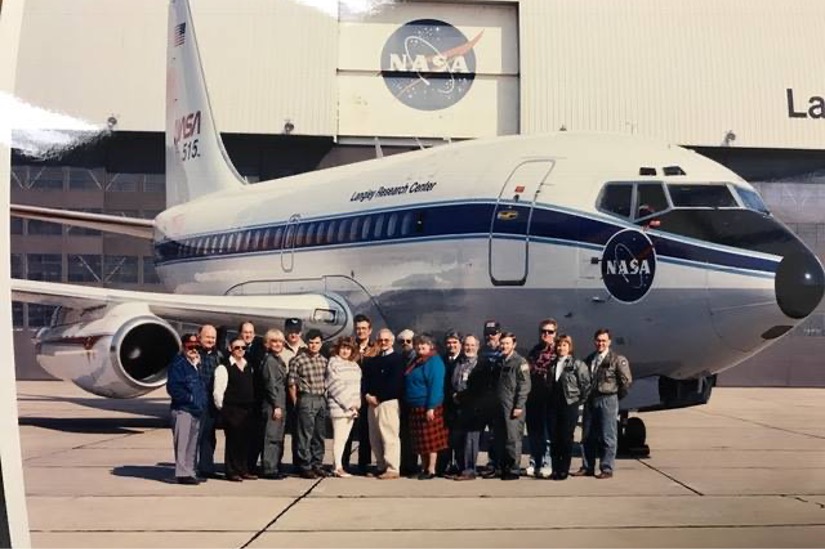
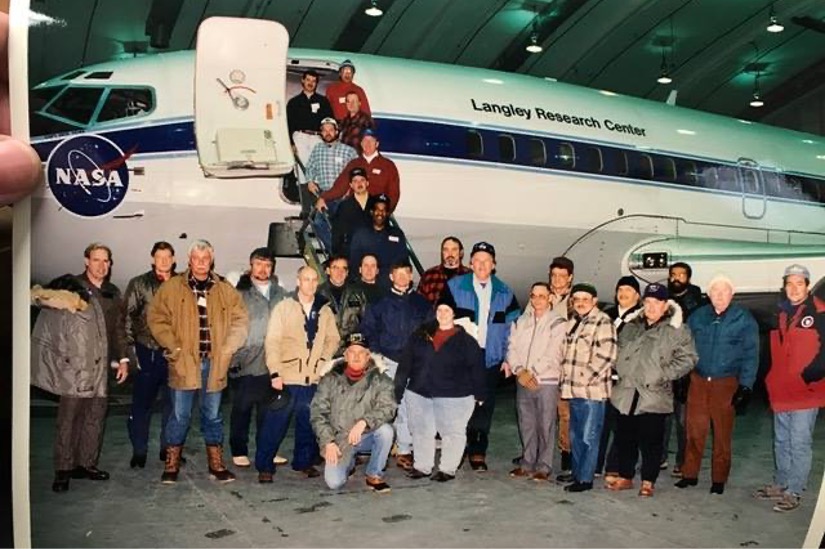
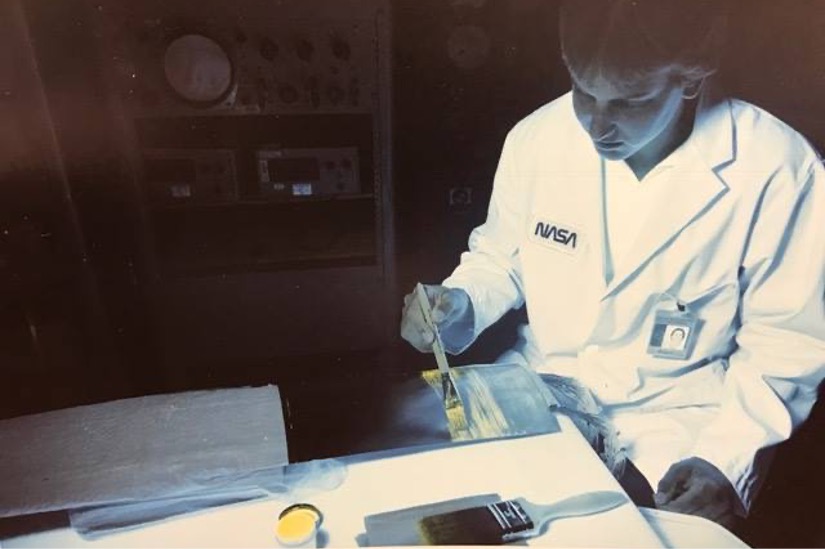
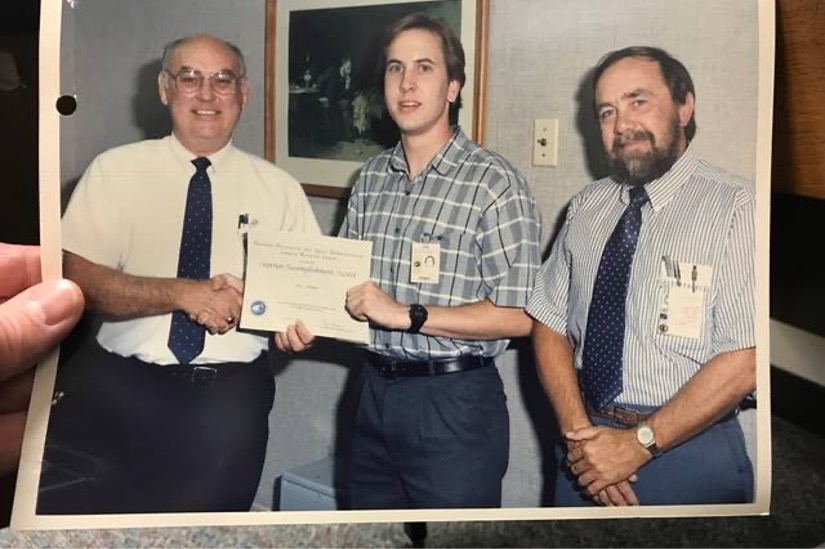
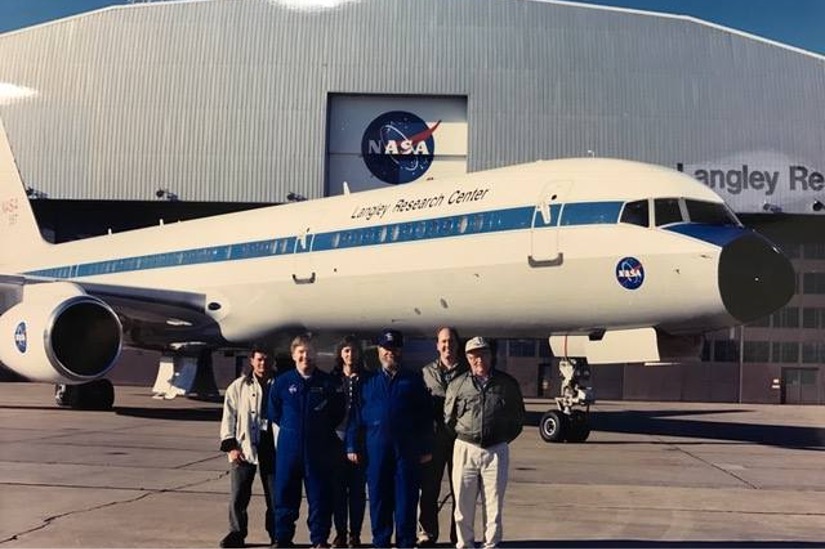
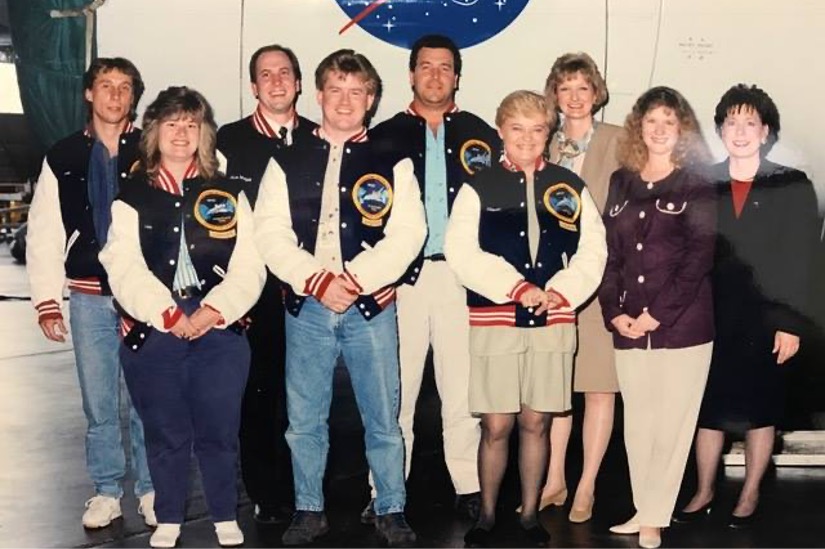
NASA Apprentice Grads